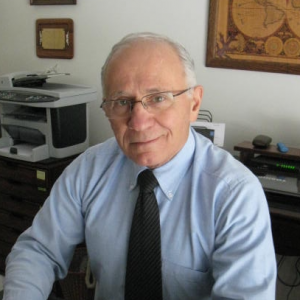“not forsaking our own assembling together, as is the habit of some, but encouraging one another; and all the more as you see the day drawing near.” Heb. 10.25
“When you assemble, each one has a psalm, has a teaching, has a revelation, has a tongue, has an interpretation.” 1 Cor. 14.26
“(God)… gave Him (Christ) as head over all things to the church, which is His body, the fullness of Him who fills all in all.” Eph. 1.22
“in whom (Christ) the whole building, being fitted together, is growing into a holy temple in the Lord, in whom you also are being built together into a dwelling of God in the Spirit.” Eph. 2.21-22
“Therefore, brethren, since we have confidence to enter the holy place by the blood of Jesus, by a new and living way which He inaugurated for us through the veil, that is, His flesh, and since we have a great priest over the house of God, let us draw near with a sincere heart in full assurance of faith, having our hearts sprinkled clean from an evil conscience and our bodies washed with pure water.” Heb. 10.19-22
When contemplating these scriptures, it becomes clear to our understanding that first of all believers are expected to assemble as a corporate Body for worship. Secondly, when gathered together, they are to function together in a spiritual manner—which cannot be duplicated or attempted to be simulated in any common or worldly fashion. The ways of the Spirit are altogether different than the ways of man, or the flesh. God considers impure any attempt to duplicate or simulate the spiritual aspect of worship in a worldly way. The mind of the believer must be renewed and transformed (see Rm. 12.2) to understand the true spiritual environment in which the Church gathers. Specifically, this environment is the holiest setting we will ever find ourselves in while living in these bodies on this earth; and though physically assembled together the atmosphere of that environment is spiritual, i.e., unseen and intangible to the natural man. Therefore faith is absolutely essential for such spiritual fellowship.
In a Church. The immediate question before us is, are believers to assemble together “in a church” to worship, or are they to gather together “as the Church” to worship. The distinction is critical. To gather together “in a church” has been shown to be most suitable to man in his natural state. It is traditional and customary. There is a designated place where activities such as worship services are held, sermons are given, memorials and rituals such as communion and baptisms are performed, and various types of programs are conducted. In his human nature, man is quite comfortable in such a setting. In this venue, he can see, hear, touch, and even smell (ex. incense or a burning candle) all the activities that form the environment of the church setting. In response, his emotions may be stirred to feel somber and reverent or joyful and blissful. His intellect and understanding may be challenged by the message or Bible reading. And, his conscience may be either pricked or appeased from guilt, at least temporarily. In all, one may feel their internal spiritual battery has been recharged, also, at least temporarily.
As a Church. Distinct is the assembly of believers “as the Church.” It is a spiritual gathering, meaning a greater emphasis is placed upon faith and the unseen and intangible realm of the heavens and the Kingdom of God. The senses of the regenerated spirit, intuition and discernment, are exercised as he contemplates his surrounding spiritual realm: a setting in the heavens, before the throne of God and of the Lamb of God (see Heb. 12.22-24); an atmosphere of God in the Holy Spirit (see Eph. 2.21-22); and the assembly of the Body of Christ, a living spiritual entity of the assembled believers (see Eph. 1.22). In this setting one does not dare bring in elements of natural man or of the worldly environment, for “God is spirit, and those who worship Him must worship in spirit and truth.” Jn. 4.24 It is in this spiritual venue a sense of God’s holy presence is perceived. Elements of emotions are set aside as one discerns this ethereal (unworldly) environment. So, too, intellectual logic and reasoning is of little value here as he intuitively assesses his union with God the Father, Jesus Christ the Son, all this in the atmosphere of the Holy Spirit.
In several of Paul’s letters, he attempts to ward off the tendency of a church from becoming worldly, function in the natural, and make the church a work of the flesh rather than that of the spirit. He writes: to the Church of Galatia, “Are you so foolish? Having begun by the Spirit, are you now being perfected by the flesh?” Gal. 3.3; to the Church of Corinth, “Don’t you know that you yourselves are God’s temple and that God’s Spirit dwells in your midst?” 1 Cor. 3.16 ; and Paul reminds the Ephesians it is not a physical church that is being built up but a spiritual, “in whom the whole building, being fitted together, is growing into a holy temple in the Lord, in whom you also are being built together into a dwelling of God in the Spirit.” Eph. 2.21-22 Whether in a church building, a living room, a tent, or in an open space, the Church must learn to function in spiritual reality, “as a church.”
The Environment of the Most Holy Place. To further illustrate this distinction of believers assembling “in a church” versus “as the Church,” we will consider the Old Covenant Tabernacle as a prototype, or pattern in the natural for something far greater in the Spirit.
In the Tabernacle. This is an eternal principle: first the blood sacrifice and waters for cleansing, then entering the realm of His presence. Under the Old Covenant the priest first visited the altar of burnt offering where the sacrificial animal was slain. He then was washed at the laver at the entrance to the tabernacle. This legally covered his sins and sinful nature—for that day. THEN, he was free to enter into the tabernacle itself, the holy habitation of God’s presence. The priest first entered into the Holy Place through an outer veil to do services of worship to God. There, he was no longer in the natural environment of the outside world. He was “in the tabernacle.” He was enshrouded by the tabernacle, enclosed by it. He stood in the light of the lampstand and breathed the air of the tabernacle.
The priest entered into this holy place sanctified by God Himself. Being officially cleansed, and now in the tabernacle, he drew near to God to do service. The high priest was qualified to enter even nearer, through another veil, into the Most Holy Place, a place of the manifestation of God’s presence. Even though the priests were able to worship and minister to God while in the tabernacle, none of this could change, or cause a metamorphosis in their inward man. They entered in bearing the nature of the “old man,” and exited with the same nature—caterpillar in, caterpillar out, never knowing the transformation of the butterfly. All acts were temporary without lasting effects.
In Christ. Please understand the spiritual magnitude of what it means to be in Christ and thus assemble “as a Church.” So much greater is the New Covenant. Purification is no longer with the blood of bulls and goats, nor is cleansing by the washing of waters from the laver. Now, purification is by the blood of the Lamb of God, Jesus Christ and “cleansing her by the washing with water through the word.” Eph. 5.26 With this blood of the New Covenant, Christ entered the spiritual realm of heaven itself, and applied His blood to the heavenly mercy seat of God to atone for your sins and mine. (Heb. 9.11-12) The believer does not enter into a tabernacle or some other building of worship, to be enshrouded by a dimension of the holiness of God. He now finds himself in Christ, the fullness of God Himself. The Spirit of Christ is our tabernacle!
The purification of the believer by the blood of Christ is both a legal justification by the divine favor of God (grace) and a progressive sanctification of the inner man of the heart. All believers are now found to be in Christ. No one, in heaven, on earth, or under the earth dare bring accusation or condemnation against this one in Christ. The believer is not in Christ based upon his merit but solely upon the blood of the Lamb of God. God Himself will deal with the quirks in our fallen nature and present character, but first we must learn to draw near…in Christ. In the Old Covenant, the High Priest must first pass through the Holy Place (1a type of Christ,) to enter the Most Holy Place, the presence of God. Today, all believers now pass through Christ and the veil of His flesh and enter the heavenly Most Holy Place. “Jesus said unto him, I am the way, and the truth, and the life: no one comes to the Father, but by Me.” Jn 14.16 Here, each believer draws close, in spirit, to God Himself, and God draws closer to him. This is the place of transformation. The butterfly, of newness of life of the believer, is emerging.
1For example, two articles in the Holy Place, the Lampstand and the Table of Shewbread represent Christ as the light of the world and the bread of life.
“Jews demand signs and Greeks look for wisdom.” 1 Cor. 1.22 Some may feel this spiritual discourse is altogether too esoteric or mysterious. It appears so because it is also altogether “out of this world” and “unnatural.” All that the world offers through the natural is very obvious to the senses and real to the understanding, as are signs and wisdom. If one relies on the natural and worldly, they must also accept its consequences. Most outcomes of this realm are superficial, lacking both depth and endurance. Little touches or causes significant change in the inner man, and its emotions of joy and gladness are fleeting. So, too, are short lived resolutions and determinations. Being a member of a church, and “being in a church” can do little to change who or what we are, let alone satisfy the purposes of Christ as when He said, “I will build My church.” Mt. 16.18
It is in the realm of the spirit, that by faith one stands in the light of God and feeds upon the bread of life. It is being fully persuaded of the reality of things unseen and intangible, but discerned by the heart (spirit.) It is precisely here that one draws close to God and His abiding presence in that inner chamber called the Most Holy Place. This is the place of transformation, the place of metamorphosis where the “caterpillar turns into the butterfly,” where the old man with its worldly nature is laid to rest and the new man, created in Christ Jesus, arises.
Pursue this vision. Do not let it go. Few may follow along. But if there is a glimmer of witness in your heart for its truth, a yearning for its reality in your life, then press forward towards this goal of the upward call of God in Christ. Become fully convinced that the Way has been opened, the veil has been torn, that you are in Christ, and the Father awaits your fellowship




